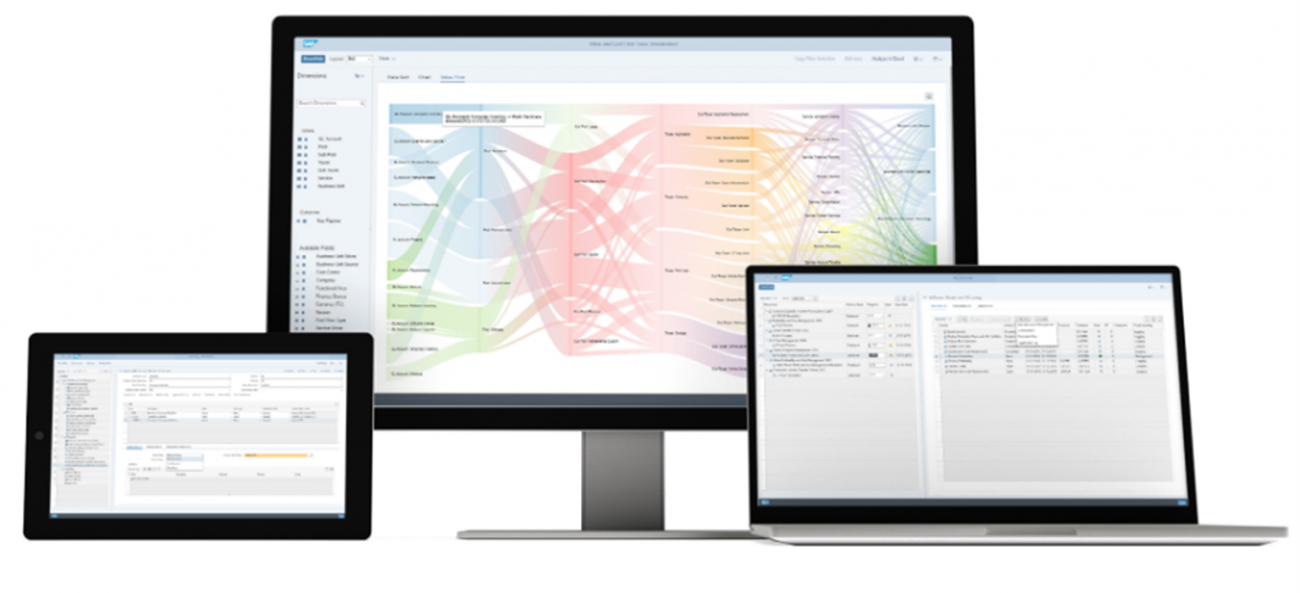
S/4HANA INTELLIGENT FINANCE - PROFITABILITY AND COST MANAGEMENT
Get an overview of a dynamic cost/revenue structure in different market segments
A well-tried product is the imputed profit and market segment analysis (CO-PA - Profitability Analysis), which is used by many companies. In addition to countless advantages, there are also some known disadvantages, as many users have experienced in practice. The reconciliation between controlling data and accounting data requires a lot of work in controlling. This is where the forward-looking concept of accounting profit and loss and market segment accounting creates a major advantage. Based on an always identical data basis, valuable resources in your company are freed up and no longer have to pursue labor-intensive reconciliation activities, but can concentrate on more value-adding activities.
The basis of the accounting profitability analysis in S/4HANA are postings to G/L accounts or cost elements, thus eliminating the redundant creation of specially defined value fields. The market segment characteristics result from fixed defined technical fields (company code, customer, article, etc.) and can be extended by individual dimensions, whereby a distinction is made here between characteristics that are permanently updated in the accounting document and characteristics that are loaded as dynamic attributes.
Optimized functionality can be achieved by using analytical Fiori apps, where it is possible to show dynamic attributes in a very simple way. With a few mouse clicks, you can map your own structures in a layout and save them for further use by yourself and your colleagues. In addition to individual contribution margin structures, it is also possible to evaluate according to a balance sheet and P&L structure. The cost of sales split functionality available in S/4 HANA enables the cost stratification of sold products to accounts in accounting and thus serves as the basis for a contribution margin structure. Variances arising in production can be split in the accounting presentation on G/L accounts defined specifically for this purpose.

Source: SAP
The use of the ledger solution allows an additional representation of values which have not (yet) generated real documents in the accounting, but are extremely relevant for controlling purposes. Examples of this would be incoming sales orders, which are thus already represented in terms of value and time. Often, however, one would also like to represent certain surcharges for sales or outgoing freight in controlling without generating a real posting. The accounting-based profitability analysis in combination with the analytical functions also offers optimal solutions for this.
Use of Fiori apps enables significantly greater user-friendliness and acceptance. The creation and customization of reports is significantly simplified as a result. Without in-depth technical knowledge, such as was required in costing-based profitability analysis to define forms and reports, users can create their own individual reports with little training and in a very short time. This saves effort and time, and ultimately costs.
In terms of modern business management, it is not only the historical view that is relevant. The modeling and simulation of possible future developments and scenarios is becoming increasingly important in order to be able to react quickly and in a concerted manner to external effects and unforeseeable events. This is possible with a further development of classical profitability analysis.
By using SAP's Profitability and Performance Management (PaPM), you can perform analyses at very granular levels and core performance indicators, faster and transfer them into possible scenarios. PaPM can be optimally integrated with S/4HANA solutions.